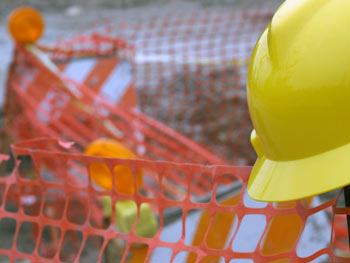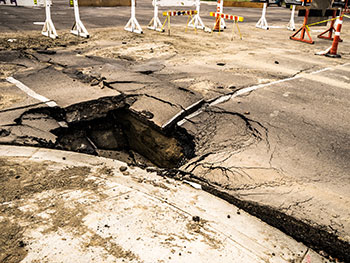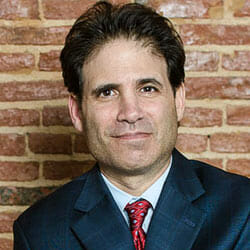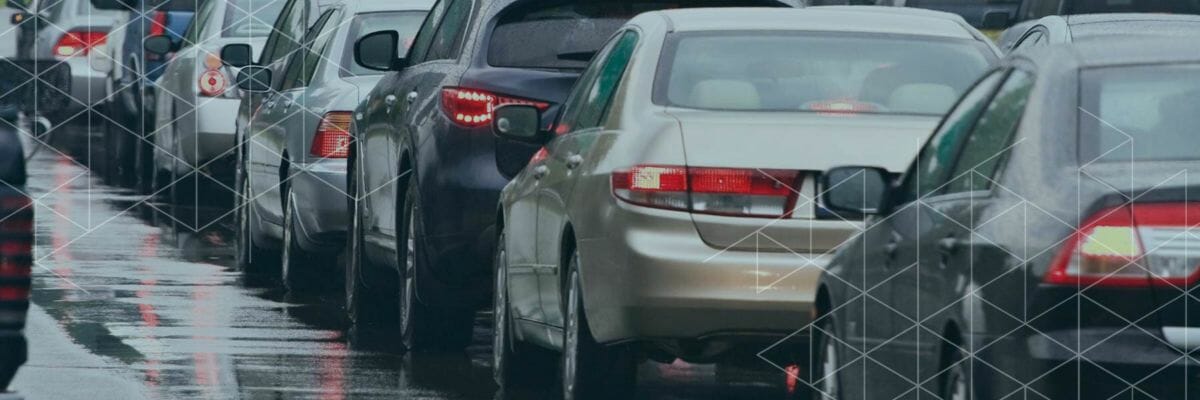Roadway Accidents Lawyer
 Most of us drive an automobile to get around from one place to another in the course of a day, and we take it completely for granted. We pay taxes on our vehicles, fuel, and other transportation expenses to build and maintain streets and highways so that they are safe to drive on, and we expect our taxes to be used in this way. The responsibility for properly maintaining roadways of any kind belongs to the municipalities, counties and states.
Most of us drive an automobile to get around from one place to another in the course of a day, and we take it completely for granted. We pay taxes on our vehicles, fuel, and other transportation expenses to build and maintain streets and highways so that they are safe to drive on, and we expect our taxes to be used in this way. The responsibility for properly maintaining roadways of any kind belongs to the municipalities, counties and states.
However, roadways are not always maintained properly, and dangerous conditions can lead to vehicular accidents that could have been prevented. And the problem only appears to be worsening. In February, 2015, a chunk of concrete fell off an overpass in Morningside while a woman was driving underneath it on the Capital Beltway (Interstate 495), crashing into her hood and windshield. Fortunately, she wasn’t injured, but the incident sparked an order to immediately inspect 27 bridges by Maryland’s Acting Transportation Secretary Pete K. Rahn.
Featured Article: Road Work Ahead: Our Failing Bridges, Highways, and Streets
 Our Interstate highway system turns 60 in 2016. Signed into being by President Eisenhower, it radically spurred economic and social expansion in our country. Over the past 60 years, we’ve built bridges and roads at a pace that far outstripped the rest of the world. Our national road transportation network now encompasses over 46,000 miles of interstate highway and 575,000 highway bridges.
Our Interstate highway system turns 60 in 2016. Signed into being by President Eisenhower, it radically spurred economic and social expansion in our country. Over the past 60 years, we’ve built bridges and roads at a pace that far outstripped the rest of the world. Our national road transportation network now encompasses over 46,000 miles of interstate highway and 575,000 highway bridges.
These days, many of us take the system for granted and embark on road trips that our grandparents (or even parents) might not have seriously contemplated. But we have not maintained our roads and bridges well, especially in the past 35 years or so. Thus, the infrastructure chickens are coming home to roost, with reports of accidents and catastrophic bridge failures. At one time the envy of the world, our crumbling bridges and roads are not only costing us billions a year—they also cost us lives. Continue Reading
Costly Consequences
At times it’s hard to believe that our national transportation infrastructure was once a shining example to all. However, repairs and maintenance that have been put off over the decades with little more than a shrug by our lawmakers are now taking their toll. Consider the monetary damages. In Maryland alone, a 2013 study estimated that negative road conditions and insufficient capacity meant an outlay of an additional $6.2 billion annually because of traffic congestion and wasted fuel, lost time, and increased vehicle operating costs. These problems cost the Baltimore-area driver $1,781 per year, and the Washington, DC, area driver $2,195.
The same report found that:
- Two-fifths (41 percent) of Maryland’s locally or state-maintained roads are in either poor or mediocre condition.
- Two-thirds (66 percent) of locally or state-maintained roads in the Baltimore area are in either poor or mediocre condition.
- Almost two-thirds (62 percent) of locally or state-maintained roads in the Washington, DC, area are in either poor or mediocre condition.
Poorly-maintained roads and bridges have a human cost as well. Thousands of injuries and, it is speculated, hundreds of deaths are due to our crumbling infrastructure. We have only to consider tragedies such as the 2007 bridge collapse in Minneapolis, which was responsible for 13 deaths and 145 injuries, to know that not taking care of our bridges and roads sacrifices human life.
Conditions that Contribute to Road Accidents
While it is impossible to make sure that all roads are completely safe, every day we see hazardous conditions that can result in accidents, injuries, and deaths. Some are due to inadequate maintenance, and some are due to poor design or construction:
- Inadequate roadway lighting that makes it difficult for drivers to see objects in their path, such as bicyclists, pedestrians, and other vehicles
- Road construction worksites with poor signage or which don’t alert drivers to potentially dangerous conditions
- Guardrails which are installed improperly, are broken, or otherwise are hazardous
- Poorly-maintained roadways, which can have large potholes, sharp drop-offs, large bumps, or uneven surfaces, all of which can cause a driver to lose control
- Improper or badly maintained traffic signals, or missing or obscured signs which don’t alert drivers to potential hazards
- A lack of signs that alert drivers to weather-related hazards such as icy bridges, flooding over roadways, and other dangerous conditions
- Roads which are not sufficiently plowed or salted during winter conditions
- Roads with poor landscaping or visual obstructions
- Roads which have insufficiently banked curves, uneven shoulders, or unmarked blind curves
- Low overpasses or overpasses with insufficient height markings.
Determining Who is Responsible
This is where it can get confusing. A number of parties can be held responsible for road hazard accidents, including the engineering firm that designed the road, the private company that built the road, and the government entity or entities responsible for maintaining the road.
State and local governments have sovereign immunity, which means that you generally cannot bring a civil suit against them. However, certain exceptions exist, usually in cases of gross negligence or recklessness by the government entities.
Claims can be brought against private parties if negligence can be proved.
Certain steps must be taken if you believe your accident is due to either private or governmental entities:
- You must properly identify the responsible parties. It’s possible that those responsible will be a mix of both private and public organizations.
- You must gather evidence. This means locating all police reports from the accident and all medical records for injuries sustained. When you do file a police report, it is important to note road quality, road conditions, and weather conditions that contributed to the accident. Use your cell phone to take photos of the accident scene if you are physically able to do so, especially of any road defects or obstructions.
- Try to locate witnesses. If there are homes or office buildings nearby, you might ask around. Perhaps similar accidents have happened in the same location in the past.
- Research similar lawsuits, concentrating on the road conditions and road quality at the accident’s location.
- If you plan to take on the government, you will need to file a Notice of Claim which lists your damages.
Generally, it is much easier to have legal help in bringing a negligence case, especially when the government might be involved. We at The Law Offices of Steven H. Heisler are ready to help you.
Be aware that there are statutes of limitations for filing claims which can be as short as six months when filing against the government. If you miss your time window, you are forever barred from filing a claim.
We’re listening. How can we help?
The aftermath of a vehicle collision can be life-changing for the accident victims and their family, and often takes years of patience and dedication to overcome. Accidents caused by poor quality roads and infrastructure can involve multiple parties and can rapidly grow in complexity. If you believe another party or parties are responsible for the injuries or losses you have suffered in a Maryland car crash, Steve Heisler can help you get your life back on track. Steve has focused exclusively on personal injury law for nearly 20 years, always working hard to ensure that accident victims receive the compensation they deserve to help pay off medical bills, physical therapy and other rehabilitative care, lost wages, vehicle repair or replacement, and other accident-related costs.
Contact the Law Offices of Steven H. Heisler today. We can help you obtain compensation for injuries you or your family member sustained. Call (410) 625-4878 for a free consultation, or use our online form.

Attorney Steve Heisler
Steve Heisler decided in 1996 that he was going to focus his law practice exclusively on injury cases. Since then, he has been representing injured people against insurance companies, disreputable medical practitioners and Big Pharma, and doing it with compassion, honesty and level-headed rationality. [ Attorney Bio ]


